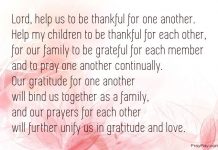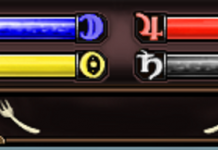The sudden loss of a friend or loved one can be one of the most difficult losses to deal with. While most losses are shaking, an unexpected loss can leave us uncertain and vulnerable about the future. In addition to the common feelings of loss and sadness, sudden loss usually is accompanied by tragedy and intensity. These can add the feelings of fear, anger, shock, despair and hopelessness to the grieving process. Whatever the cause of the sudden death, the survivors do not have a chance to experience anticipatory grief. Professional counselors label this time in which family and friends begin to prepare emotionally and physically for the loss of a loved one. It can begin to happen when someone is
diagnosed with a terminal illness
. It can also be prompted when a person reaches an advanced age. This time helps the survivor prepare practically for the loss and often reduces the intensity of the reactions to the death.
Four Important Truths About Sudden Loss
- Sudden loss allows no time to prepare. Items ranging from funeral preparations to settling financial obligations become the urgent matters that need to be dealt with. Emotional connections feel unraveled because final goodbyes were not possible. Even shared plans for the future must now be rearranged or cancelled. It is easy to feel cheated and angered by the loss.
- Sudden loss makes us feel insecure. We are reminded that the world isn’t always a safe place. We come to grips with the fact that things do not always work out the way we anticipate. The truth that bad things can happen to good people becomes etched in the stones in front of us. We can naturally feel fear and uncertainty about our own future.
- Sudden loss makes us deal with change. For most, change is a difficult process to accept and embrace. The absence of the loved one in our lives makes change necessary. The loved one may have had an integral role in our daily routine – a partner in business, a baby-sitter for our child, a trusted confidant. Change is inevitable and will actually aid in the healing process.
- Sudden loss always carries a certain amount of trauma. It is a loss that often does not make sense. It leaves us feeling that life is not fair. It can leave us feeling vulnerable and exposed. Sometimes a sudden loss involves a violent death, either through a natural disaster like an earthquake or one perpetrated by individuals like a bombing or a murder. Suicide is another form of a violent, sudden death. A sudden loss can also come from an accident, like a wreck on the highway or a plane crash. Sudden losses can also occur naturally. Heart attacks and strokes are major causes of death and are likely to be unexpected and sudden.
Things You Can Do to Support Someone Who is Grieving a Sudden Loss
It is almost impossible to imagine, but people do recover from sudden losses. When we begin to accept change, and move through the pain, we can begin to heal. Here are a handful of suggestions that may prove beneficial.
- Assure the one grieving of the presence of supportive people. The security of their world has been shaken to the foundation. A person that they have come to count on is no longer with them. Your presence reassures them that you will be there and you are not going away.
- Encourage them to mourn and grieve immediately. Being brave and courageous may sound admirable, but it is often harmful if honest emotions are shut out. Give the mourner opportunities to cry – perhaps not wailing in front of hundreds at a wake, but in private or with a selected, trusted loved one. Putting the mourning off only prolongs the grieving process and can cause emotional scars.
- Listen to the one mourning with tenderness and compassion. A common reaction to unexpected loss is to attempt to understand the reasons the event occurred. You can help the person process through these questions, and perhaps settle on a reasonable conclusion. Realize that sometimes the answer to the question “Why?” is one that will never truly be known or understood.
- While this is natural immediately after the loss, continuing to struggle with the questions is not healthy. Not only can this be damaging to your emotional health, but it can also stall the grieving process. Asking “why” can keep an individual stuck in pain. Because we were neither present nor all-knowing, many of the “why” questions must be answered with, “I don’t know.” Instead, ask yourself “what?” What feelings are underneath the anger and distress that you are experiencing? What do you need to do to begin to put your life back together? Unanswered questions of “why” are a natural part of life.
- Help the mourner adjust to the practical changes in life. The sudden loss has probably caused a disruption in several of the responsibilities and roles that were played within the family. Help the person process these changes by allowing them to talk and express their fears and concerns. The loss may have also placed a financial burden on the family. The financial challenges may be limited and immediate, and you may choose to offer some assistance. If the challenges will be ongoing, help them by providing counsel, thinking through the problems and seeking the correct avenues for resolution.
- Encourage the mourner to turn to others for help and support. Friends and loved ones can provide encouragement and presence, but it may take a professional counselor to help chart out specific plans or to deal with deeply repressed emotions. It is not a sign of weakness, but wisdom, to seek assistance when the path is uncertain.
- Realize that everyone grieves in a unique way. Even though similarities are noticed, there is no textbook way or time frame in which to grieve. Because of the unexpected nature of this type of loss, the emotional response of grief may be much more intense. No feelings are “wrong.” No timeline is present for healing.
Though it takes time to process and work through all of the emotions, each day and each experience provides another step towards healing.
www.econdolence.com
While the terms expected loss and unexpected loss are commonly used in risk management, it is important to have a clear understanding of what they actually mean.
In general, expected loss as the name suggests is the expected loss from a loan exposure. On the other hand unexpected loss is the loss that exceeds the expectations.
Expected Loss
In statistical terms, the expected loss is the average credit loss that we would expect from an exposure or a portfolio over a given period of time.
The expected loss is measured using the following formula:
Portfolio Expected Loss: The total expected loss of a portfolio will simply be the summation of expected losses of individual assets. This is because the mean of the sum is the same as the sum of the mean.
Since the expected loss is what a business expects to lose in a year, the business will generally have budget for it and the losses can be borne as a part of the normal operating cash flows.
Unexpected Loss
The unexpected loss is the average total loss over and above the mean loss. It is calculated as a standard deviation from the mean at a certain confidence level at a certain confidence level. It is also referred to as Credit VaR.
A business will safeguard itself from unexpected losses by allocating capital.
Unlike expected loss, the expected loss of a portfolio is not calculated by adding the unexpected loss of individual assets. This is because unless there is perfect correlation, the standard deviation of sum will not be the same as the sum of standard deviation.
The unexpected loss of a portfolio at a 99% confidence level will be expressed as follows:
UL99% = D99% – EL
Where D99% represents the 99% Var Quantile.
If the 99% VaR level is $200m and the expected portfolio loss is $50, then the unexpected loss will be $150m.
The unexpected loss of a portfolio will be expressed as follows:
Apart from the expected and unexpected losses, there are also catastrophic losses, which are covered by insurance.
The Credit Loss Distribution
The following diagram shows the credit loss distribution.
Characteristics of Credit Loss Distribution
The credit losses distribution has three key characteristics:
- It is not symmetrical. There is a limited upside because the best scenario is when there is no loss. However, there is extremely large downside, that is, the losses can be huge.
- It is highly skewed. The distribution is more concentrated toward small losses, with very few chances of large losses.
- The distribution has heavy tail, i.e., the probability of large losses reduces very slowly.
Try our courses on Data Science for Finance. JOIN FREE
financetrain.com









